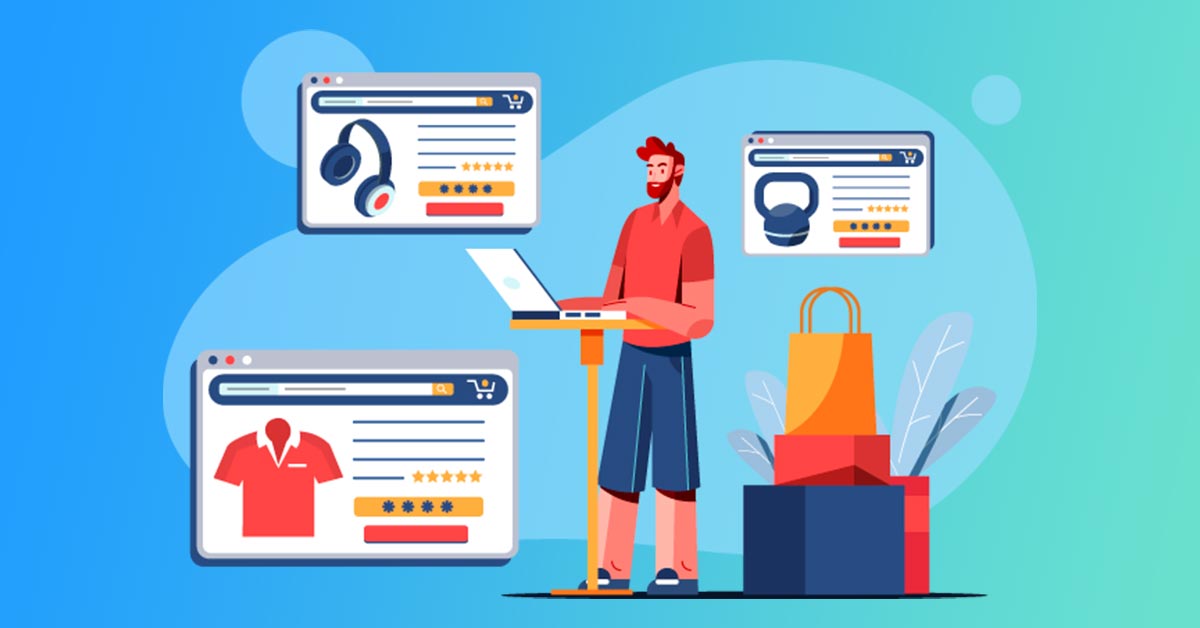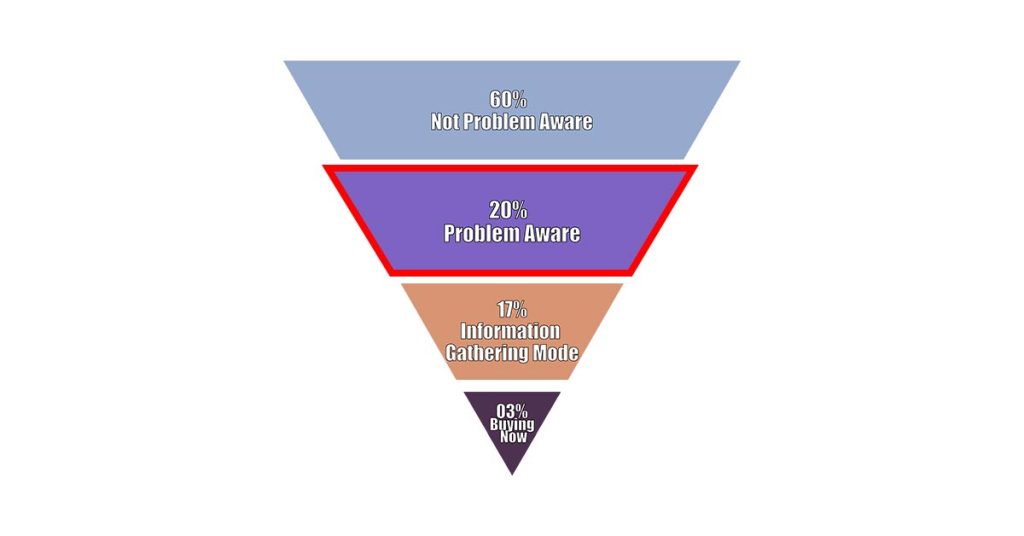How To Create High-Value Content Offers( HVCOs ) for eCommerce Physical Products?

1. How to Create High-Value Content Offers [HVCOs] for eCommerce Physical Products: A Comprehensive Guide
In today’s competitive e-commerce landscape, the key to standing out and thriving lies in your ability to provide real value to your target audience. One highly effective strategy for achieving this is by crafting high-value content offers. These offers not only help you connect with potential customers but also establish your brand as an authority in your niche. In this article, we will explore the art and science of creating compelling content offers specifically tailored for e-commerce businesses selling physical products.
Why High-Value Content Offers Matter in E-commerce
Before delving into the nitty-gritty of content creation, let’s first understand why high-value content offers are crucial in the realm of e-commerce.
- Differentiation in a Crowded Marketplace: The e-commerce space is flooded with competitors. To rise above the noise, you need something that sets you apart. High-value content offers act as your unique selling proposition (USP) and draw potential customers to your brand.
- Building Trust and Authority: Trust is the foundation of any successful e-commerce venture. By providing valuable content, you not only earn trust but also position yourself as an industry authority. Customers are more likely to buy from a brand they perceive as knowledgeable and trustworthy.
- Lead Generation and Conversion: Content offers are an excellent way to capture leads and nurture them into paying customers. When done right, these offers entice visitors to share their contact information in exchange for valuable insights, resources, or solutions.
- Customer Engagement and Retention: Content offers are not just for new leads; they can also engage and retain your existing customers. By continually delivering value, you keep your audience engaged and loyal.
Now that we’ve established the significance of high-value content offers in e-commerce, let’s dive into the step-by-step process of creating them. In the following sections, we will explore various aspects, including identifying your target audience, crafting compelling content titles, and delivering actionable content that builds goodwill with your customers.
Stay tuned as we walk you through the journey of crafting content offers that resonate with your audience, drive leads, and ultimately boost your e-commerce success. From understanding your niche market to mastering the art of ethical bribes in marketing, we’ll cover it all. Let’s embark on this exciting journey of creating high-value content offers for your e-commerce business.

2. Explain, What is "Physical Products "?
Physical Products in E-commerce: The Tangible World of Online Shopping
In the realm of e-commerce, the term “physical products” refers to tangible goods that customers can see, touch, and interact with in the real world. Unlike digital products, which are intangible and can be downloaded or accessed online, physical products are physical objects that are typically shipped to the customer’s location after a purchase is made.
Physical products encompass a vast array of items, ranging from clothing, electronics, and home appliances to furniture, books, and toys. Essentially, anything that can be manufactured, packaged, and delivered falls under this category. These products are at the core of the online shopping experience, and the e-commerce industry revolves around their sale and distribution.
Here are some key characteristics and considerations regarding physical products in the e-commerce context:
1. Variety: Physical products come in an incredible diversity of forms, sizes, and functions. E-commerce businesses can specialize in a specific niche or offer a wide range of products to cater to various customer needs
2. Inventory Management: Managing physical product inventory is a critical aspect of e-commerce operations. It involves tracking stock levels, replenishing when necessary, and ensuring efficient storage and shipping.
3. Fulfillment Services: Many e-commerce businesses rely on fulfillment services, such as third-party logistics providers (3PLs), to handle the storage, packaging, and shipping of physical products. This can streamline operations and reduce the burden on the business itself.
4. Shipping Automation: Shipping physical products often involves coordinating with shipping carriers, calculating shipping costs, and providing customers with accurate delivery estimates. Automation tools can simplify this process and enhance the customer experience.
5. Marketing and Presentation: Presenting physical products effectively through high-quality images, detailed descriptions, and persuasive marketing techniques is essential to attract and convert online shoppers.
6. Customer Experience: Customer satisfaction with physical products is influenced by factors like product quality, packaging, and delivery speed. E-commerce businesses must prioritize these aspects to build trust and encourage repeat purchases.
7. Return and Refund Policies: Dealing with returns and refunds is a common part of selling physical products online. Having clear policies in place is crucial to handle these situations smoothly.
Physical products are the tangible goods that e-commerce businesses offer to customers. They play a central role in the online shopping experience and require careful management, marketing, and delivery to ensure success in the competitive e-commerce market.

3. How to analyze and Divide the Target Audience for a Physical Product Based on the Sales Funnel Stages?
Effectively dividing and analyzing your target audience according to the four stages of the sales funnel is crucial for tailoring your marketing efforts and content to the specific needs and behaviors of each group. This process ensures that you provide the right information at the right time, increasing your chances of converting potential customers into buyers. Here’s a formal and effective process to analyze your audience within each funnel stage:
Stage 1: Not Problem Aware (60%)
Step 1: Market Research
- Conduct market research to identify potential customers who are not yet aware of their problems or needs that your physical product can address.
- Use tools like keyword research and social listening to identify topics and discussions related to your product’s niche.
Step 2: Content Creation
- Create informative and educational content that raises awareness about the issues your product can solve.
- Develop blog posts, videos, or infographics that highlight common pain points within your niche.
- Focus on providing value without directly promoting your product.
Step 3: Distribution
- Share your content through various channels, including social media, industry forums, and email newsletters.
- Use targeted advertising to reach potential customers who fit the “Not Problem Aware” profile.
Stage 2: Problem Aware (20%)
Step 4: Identifying Problem-Aware Audiences
- Analyze website and social media analytics to identify visitors who have engaged with your awareness content.
- Segment these visitors as “Problem Aware” based on their interactions.
Step 5: Content Development
- Create content that addresses the pain points your “Problem Aware” audience recognizes.
- Emphasize how your product can provide solutions.
- Develop case studies, testimonials, or expert opinions to showcase the benefits of your product.
Step 6: Personalized Engagement
- Engage with your “Problem Aware” audience through personalized email campaigns.
- Offer them exclusive insights and additional information to nurture their interest.
Stage 3: Information Gathering Mode (17%)
Step 7: Identifying Information Gatherers
- Analyze user behavior on your website and content consumption patterns to identify those actively seeking solutions.
- Utilize lead tracking and scoring to categorize leads as “Information Gathering Mode.”
Step 8: Content Optimization
- Create comprehensive product guides, comparisons, and in-depth articles that answer specific questions your “Information Gathering Mode” audience might have.
- Showcase your product’s unique selling points and how it compares to competitors.
Step 9: Lead Nurturing
- Implement automated email workflows to nurture “Information Gathering Mode” leads.
- Share targeted content, offer product demos, and provide opportunities for one-on-one consultations.
Stage 4: Buying Now (3%)
Step 10: Identifying Ready Buyers
- Monitor website activity and track conversions to identify individuals who are actively exploring purchase options.
- Segment these leads as “Buying Now.”
Step 11: Conversion Optimization
- Create a seamless and user-friendly purchasing experience.
- Implement clear calls to action, easy checkout processes, and provide incentives like discounts or free shipping.
Step 12: Post-Purchase Engagement
- After conversion, continue engaging with “Buying Now” customers through order confirmations, follow-up surveys, and personalized recommendations.
- Encourage them to become repeat customers.
By following this process, you can effectively analyze and target your audience at each stage of the sales funnel, ensuring that your marketing efforts align with their level of awareness and readiness to make a purchase.

4. Let's explore unique HVCOs ideas tailored to each of the main stages of the sales funnel.
4.1 HVCOs for Stage 1: "Not Problem Aware"
Creating High-Value Content Offers (HVCOs) for the “Stage 1: Not Problem Aware” segment of your target audience for physical products is all about introducing them to potential problems or needs they may not be aware of and providing valuable information without directly promoting your product. Here are some effective HVCO ideas for this stage:
Educational eBooks or Guides:
- Develop comprehensive eBooks or guides that delve into industry trends, challenges, and common pain points.
- Provide valuable insights and statistics that shed light on potential problems within your niche.
- Avoid overt promotion of your product; instead, focus on educating and raising awareness.
Explainer Videos:
- Create short, engaging videos that introduce viewers to common problems or needs in your industry.
- Use animation, graphics, and storytelling to make the content visually appealing and easy to understand.
- End the video with a call to action to subscribe for more information.
Info-graphics on Industry Trends:
- Design visually appealing infographics that highlight key industry trends and challenges.
- Use clear graphics and concise text to convey information.
- Include a link or QR code to access more in-depth content.
Webinars or Webcasts:
- Host webinars or webcasts featuring industry experts discussing emerging trends and challenges.
- Encourage audience participation with live Q&A sessions.
- Use these events to build your email list and nurture leads with follow-up content.
Email Courses:
- Create a series of educational emails that are delivered over a set period.
- Each email should contain valuable insights and information related to potential problems or needs in your industry.
- Gradually introduce the concept of solutions without explicitly promoting your product.
Industry Reports and Surveys:
- Conduct surveys or research within your industry and compile the findings into detailed reports.
- Share statistics and insights on industry pain points, challenges, and emerging trends.
- Offer these reports as downloadable resources in exchange for contact information.
Whitepapers on Market Trends:
- Write in-depth whitepapers that explore market trends, challenges, and opportunities.
- Provide data-backed insights and expert analysis.
- Make whitepapers available for download in return for email subscriptions.
Interactive Quizzes and Assessments:
- Create engaging quizzes or assessments that help individuals identify potential problems or needs they may not be aware of.
- Offer personalized recommendations based on quiz results.
- Encourage participants to subscribe for more information
Podcasts or Audio Resources:
- Produce informative podcasts or audio resources that discuss industry topics and challenges.
- Share stories, interviews, and insights in an accessible format.
- Include links to additional resources in the podcast descriptions.
Content Libraries:
- Build a content library on your website that houses a variety of articles, videos, and resources.
- Organize content by category to make it easy for visitors to explore and learn about industry-related topics.
The key to effective HVCOs at this stage is to provide value through education and awareness-building. While subtly introducing the idea of solutions, refrain from direct product promotion, as the primary goal is to cultivate trust and engage the “Not Problem Aware” audience. These content offers should inspire curiosity and encourage them to explore further.
4.2 HVCOs for Stage 2: "Problem Aware"
Creating High-Value Content Offers (HVCOs) for the “Stage 2: Problem Aware” segment of your target audience for physical products involves addressing their recognized problems and highlighting the benefits of solving these issues. Here are some effective HVCO ideas for this stage:
Solution-Focused Guides:
- Develop comprehensive guides that offer practical solutions to the problems your audience is aware of.
- Provide step-by-step instructions, tips, and actionable advice.
- Showcase how your product can help solve these problems.
Product Comparison Charts:
- Create detailed product comparison charts that compare your product to competitors.
- Highlight the unique features and benefits that make your product the best solution.
- Include real-world performance data and user reviews if available.
Case Studies and Success Stories:
- Share real-life case studies and success stories of customers who solved their problems using your product.
- Include before-and-after scenarios to illustrate the impact of your solution.
- Highlight key benefits and outcomes achieved.
Interactive Tools and Calculators:
- Develop interactive tools or calculators that allow users to estimate the benefits of using your product.
- Encourage audience engagement by providing personalized results based on user input.
- Use these tools as lead generation magnets.
Expert Webinars and Workshops:
- Host webinars or online workshops featuring industry experts who discuss problem-solving strategies.
- Allow participants to ask questions and provide actionable insights.
- Use these events to build trust and demonstrate expertise.
Product Demonstrations and Video Tutorials:
- Create video demonstrations or tutorials that showcase how your product addresses specific problems.
- Highlight product features and benefits through practical examples.
- Share these videos on your website and social media platforms.
Resource Libraries for Problem Solvers:
- Build a resource library on your website specifically tailored to problem-solving.
- Include articles, videos, templates, and downloadable resources.
- Organize content by problem categories for easy navigation.
FAQs and Problem-Solving Guides:
- Create detailed FAQs and problem-solving guides that address common questions and challenges.
- Provide clear explanations and solutions related to your product’s niche.
- Make these resources easily accessible on your website.
Product Samples or Trials:
- Offer free product samples or trials to allow your audience to experience the benefits firsthand.
- Encourage users to try your product and provide feedback.
- Use this approach to convert engaged leads into customers.
Exclusive Problem-Solving Workbooks:
- Develop interactive workbooks or worksheets that guide users through solving specific problems.
- Offer these resources exclusively to your “Problem Aware” audience.
- Use them as lead magnets to capture contact information.
Email Mini-Courses:
- Create a series of problem-solving email mini-courses delivered over a few days or weeks.
- Provide in-depth insights, tips, and strategies for addressing recognized problems.
- Gradually introduce your product as a valuable solution.
Community Forums and Discussion Groups:
- Create online forums or discussion groups where your audience can connect, share experiences, and seek solutions.
- Actively participate in discussions and offer expert advice when relevant.
- Use these platforms to showcase your product as a valuable solution.
The key to effective HVCOs at this stage is to provide problem-solving content that demonstrates the value of your product. Highlight the benefits and effectiveness of your solution, but remain focused on helping your “Problem Aware” audience address their specific issues. Build trust and credibility by delivering valuable insights and actionable advice.
4.3 HVCOs for Stage 3: " Information Gathering Mode "
Creating High-Value Content Offers (HVCOs) for the “Stage 3: Information Gathering Mode” segment of your target audience for physical products requires providing detailed information, comparisons, and case studies to demonstrate the value of your product. Here are some effective HVCO ideas for this stage:
Comprehensive Product Guides:
- Develop detailed product guides that provide in-depth information about your physical product.
- Include specifications, use cases, benefits, and maintenance instructions.
- Use clear visuals and graphics to enhance understanding.
Product Comparison Reports:
- Create comprehensive reports that compare your product to similar offerings in the market.
- Highlight key features, performance metrics, pricing, and user reviews.
- Offer an unbiased analysis to help prospects make informed decisions.
Interactive Product Configurators:
- Build interactive tools that allow users to customize and configure your product to their specific needs.
- Provide real-time price estimates and product recommendations based on user choices.
Video Demonstrations and Walkthroughs:
- Create video demonstrations and walkthroughs that showcase your product in action.
- Focus on various use cases and scenarios to address specific user needs.
- Provide step-by-step tutorials and tips.
Interactive 3D Product Tours:
- Develop interactive 3D tours of your product, allowing users to explore it from different angles.
- Provide pop-up information boxes for features and benefits.
- Enhance the user experience with virtual tours.
Product Sample Kits:
- Offer product sample kits or bundles that allow users to experience your product firsthand.
- Include product samples, brochures, and exclusive discounts.
- Use this approach to encourage trial and conversion.
Expert Webinars and Panels:
- Host webinars or panel discussions featuring industry experts and product specialists.
- Dive deep into the technical aspects of your product and how it solves specific problems.
- Encourage questions and engagement.
In-Depth User Manuals:
- Create comprehensive user manuals that provide detailed instructions for using your product.
- Include troubleshooting tips, maintenance guidelines, and warranty information.
- Offer downloadable PDFs or access through a dedicated portal.
Customization Guides:
- Develop guides that walk users through customizing your product to meet their unique requirements.
- Include examples, tips, and case studies of successful customizations.
- Show the flexibility and adaptability of your product.
Live Product Demos and Consultations:
- Offer live product demonstrations and one-on-one consultations with product experts.
- Address specific user questions and concerns in real time.
- Use these sessions to showcase the value of your product.
Advanced Product Workshops:
- Organize in-depth workshops that provide advanced insights into your product’s capabilities.
- Cover advanced features, integration options, and optimization strategies.
- Target users who are actively seeking advanced knowledge.
The key to effective HVCOs at this stage is to provide detailed and technical information that helps users understand the full potential of your product. Address specific needs and use cases, and demonstrate how your product can meet those requirements effectively. Encourage engagement through interactive tools and personalized consultations to convert leads into informed buyers.
4.4 HVCOs for Stage 4: "Buying Now Mode"
Creating High-Value Content Offers (HVCOs) for the “Stage 4: Buying Now” segment of your target audience for physical products is all about facilitating the purchasing process and providing the final push needed to convert prospects into customers. Here are some effective HVCO ideas for this stage:
Exclusive Discounts and Promotions:
- Offer exclusive discounts, promotions, or bundle deals to incentivize immediate purchases.
- Create urgency by highlighting limited-time offers or special pricing.
Product Demonstrations and Trials:
- Provide live product demonstrations or trials tailored to individual customer needs.
- Offer personalized experiences that showcase how the product addresses their specific requirements.
Customization Consultations:
- Offer one-on-one consultations with product specialists to help customers customize the product to their exact specifications.
- Provide guidance on configuration options and recommendations.
VIP Membership Programs:
- Introduce VIP membership programs that offer premium benefits such as priority shipping, dedicated support, and exclusive access to new product releases.
- Encourage immediate purchases with the promise of VIP status.
Extended Warranty and Service Plans:
- Offer extended warranty and service plans to provide peace of mind to buyers.
- Highlight the added value and protection these plans provide.
Bundled Training and Onboarding:
- Bundle training sessions or onboarding services with the purchase to ensure customers get the most out of their product.
- Showcase the value of expert guidance.
Immediate Product Delivery Options:
- Provide options for expedited or same-day product delivery for urgent needs.
- Emphasize convenience and quick access to the product.
Personalized Recommendations:
- Offer personalized product recommendations based on customer preferences and previous interactions.
- Create tailored product bundles that align with their needs.
Satisfaction Guarantees:
- Promote satisfaction guarantees or money-back guarantees to ease any remaining hesitation.
- Highlight the low risk associated with the purchase decision.
Flexible Financing Options:
- Introduce flexible financing plans, installment options, or buy-now-pay-later solutions.
- Make it easy for customers to afford the product.
Dedicated Support and Priority Service:
- Promise dedicated customer support and priority service for immediate buyers.
- Ensure quick resolution of any issues or inquiries.
Customer Reviews and Testimonials:
- Share recent customer reviews and testimonials that highlight positive experiences with your product.
- Leverage social proof to reinforce the buying decision.
Post-Purchase Loyalty Programs:
- Encourage repeat purchases by enrolling customers in post-purchase loyalty programs.
- Offer rewards, discounts, or exclusive access to incentivize future buying.
Instant Chat or Phone Support:
- Provide instant chat or phone support for customers ready to make a purchase.
- Offer real-time assistance and answer any last-minute questions.
The key to effective HVCOs at this stage is to remove any remaining barriers to purchase and provide compelling incentives for immediate action. Ensure that the buying process is smooth and hassle-free, and offer additional value, guarantees, or perks to entice customers to complete their purchase promptly.

5. Who are the Important experts to discuss before creating HVCOs the above stage-wise ideas?
Before creating stage-wise High-Value Content Offers (HVCOs) for digital marketing, especially for physical products, it’s essential to collaborate with experts and gather valuable insights. Here are the important experts to consider involving in the process:
1. Industry Experts:
- These experts possess deep knowledge of your industry, including trends, challenges, and emerging opportunities.
- They can provide valuable insights into the issues consumers face and the potential solutions that can be offered through your products.
- Collaborate with industry experts to validate the relevance of your content and ensure it addresses current industry needs.
2. Product Specialists:
- Product specialists are intimately familiar with the features, benefits, and technical aspects of your physical products.
- They can help create content that effectively highlights the unique selling points of your products.
- Collaborate with product specialists to ensure accuracy and clarity in product-related content.
3. Content Creators and Copywriters:
- Professional content creators and copywriters can craft compelling and persuasive content tailored to each stage of the sales funnel.
- They can transform technical information into engaging, reader-friendly content.
- Collaborate with content creators to develop well-structured, informative, and persuasive content offers.
4. UX/UI Designers:
- UX/UI designers can play a crucial role in creating interactive tools, calculators, product tours, and other engaging content formats.
- They ensure that the user experience is intuitive and visually appealing, enhancing the effectiveness of your HVCOs.
- Collaborate with designers to create visually engaging and user-friendly content.
5. Data Analysts and Researchers:
- Data analysts and researchers can help gather and analyze relevant industry data, market trends, and consumer behavior.
- They can identify key insights that inform your content strategy and HVCO development.
- Collaborate with data analysts to incorporate data-driven insights into your content.
6. Customer Support and Sales Teams:
- Customer support and sales teams have direct interactions with customers and prospects.
- They can provide valuable feedback on common customer questions, pain points, and objections.
- Collaborate with these teams to address customer concerns and tailor your content to real-world scenarios.
7. SEO Specialists:
- SEO specialists can assist in keyword research and optimization to ensure your content ranks well in search engines.
- They can help you align your content with the search intent of your target audience.
- Collaborate with SEO specialists to enhance the discoverability of your HVCOs.
8. Social Media Managers:
- Social media managers can provide insights into current discussions and trends within your industry on social platforms.
- They can help promote your HVCOs effectively through social media channels.
- Collaborate with social media managers to ensure your content reaches a wider audience.
9. Customer Feedback and Surveys:
- Actively gather feedback from your existing customers through surveys and feedback forms.
- Understand their pain points, needs, and preferences.
- Incorporate this valuable customer feedback into your content creation process.
10. User Testing and Focus Groups: – Conduct user testing and engage focus groups to gather direct input on your HVCOs. – Obtain feedback on usability, clarity, and effectiveness. – Use this input to refine your content and ensure it resonates with your target audience.
Collaborating with these experts and stakeholders ensures that your HVCOs are well-informed, engaging, and effective at each stage of the sales funnel. It helps you create content that addresses real consumer needs and aligns with your business goals.

6. What are the Required resources to create HVCOs?
Creating high-value content offers (HVCOs) for digital marketing, especially for physical products, involves various resources to ensure the effectiveness and quality of your content. Here are the required resources:
1. Expertise:
- Access to subject matter experts, industry specialists, and product knowledge.
- Expertise in content creation, including writing, design, video production, and interactive tool development.
2. Research:
- Market research to understand industry trends, customer needs, and competitor analysis.
- Data analysis to gather insights and support content strategies.
3. Tools and Software:
- Content management systems (CMS) for publishing and managing content.
- Graphic design tools for creating visuals, infographics, and interactive content.
- Video editing and production software.
- SEO and keyword research tools.
- Data analytics and tracking tools.
4. Design and Multimedia:
- Graphic designers and multimedia specialists for visual content creation.
- Access to stock images, videos, and graphics.
- Tools for creating interactive content, such as calculators and product tours.
5. Technology and Development:
- Web developers or programmers for creating interactive content and tools.
- Hosting and server resources for hosting web-based tools or interactive content.
6. Customer Data:
- Access to customer data, including demographics, behavior, and preferences.
- Customer feedback and insights gathered from surveys and user testing.
7. Marketing and Promotion:
- Marketing teams to promote your HVCOs through various channels.
- Social media managers for social promotion.
- Budget for paid advertising if necessary.
8. Content Creation and Management:
- Content creators, copywriters, and editors to produce written content.
- Video producers and editors for video content.
- Content management systems (CMS) for content creation and publication.
9. Testing and Quality Assurance:
- User testing resources and focus groups for content validation.
- Quality assurance (QA) teams to ensure interactive tools and content work correctly.
10. Analytics and Monitoring: – Analytics tools for tracking user engagement, conversions, and performance. – Resources for ongoing monitoring and adjustment of content based on data.
11. Budget: – Adequate budget allocation for content creation, promotion, and distribution. – Investment in paid advertising if necessary.
12. Time and Project Management: – Project managers and timelines to ensure content creation stays on schedule. – Coordination and collaboration among team members and stakeholders.
13. Legal and Compliance: – Legal resources to ensure content complies with relevant laws and regulations. – Intellectual property rights management, especially for visuals and multimedia.
14. Customer Support: – Customer support teams to handle inquiries, feedback, and customer interactions related to HVCOs.
15. Feedback Loop: – A system for collecting and analyzing feedback from users and customers to continually improve HVCOs.
16. Testing Environments: – Test environments for user testing, including access to representative user groups.
These resources, when effectively managed and utilized, contribute to the successful creation, promotion, and optimization of high-value content offers that engage and convert your target audience. The specific resources required may vary depending on the complexity of your HVCOs and your organization’s capabilities.

7. Conclusion
In conclusion, creating high-value content offers (HVCOs) for digital marketing, especially for physical products, is a strategic approach to engage and convert your target audience throughout the sales funnel. By tailoring your content to each stage of the funnel, you can guide potential customers from initial awareness to making informed purchase decisions.
Key takeaways:
1. Understanding the Sales Funnel: Recognize the importance of dividing your audience into stages of the sales funnel, from “Not Problem Aware” to “Buying Now.” This segmentation allows you to deliver the right content at the right time.
2. Effective Content Strategies: Employ a variety of content formats and strategies at each stage, such as educational content, problem-solving resources, in-depth product information, and promotions, to address the specific needs of your audience.
3. Collaboration with Experts: Involve subject matter experts, industry specialists, and various stakeholders to ensure your HVCOs are well-informed and effective.
4. Resources: Allocate the necessary resources, including expertise, research, tools, design, technology, and budgets, to create, promote, and monitor your content effectively.
5. Continuous Improvement: Establish a feedback loop to gather insights and data from users and customers. Use this information to refine and improve your HVCOs over time.
Creating compelling HVCOs requires a strategic approach that combines industry knowledge, creative content creation, and effective promotion. By aligning your content with the needs and interests of your target audience, you can build trust, provide value, and drive conversions for your physical products.















